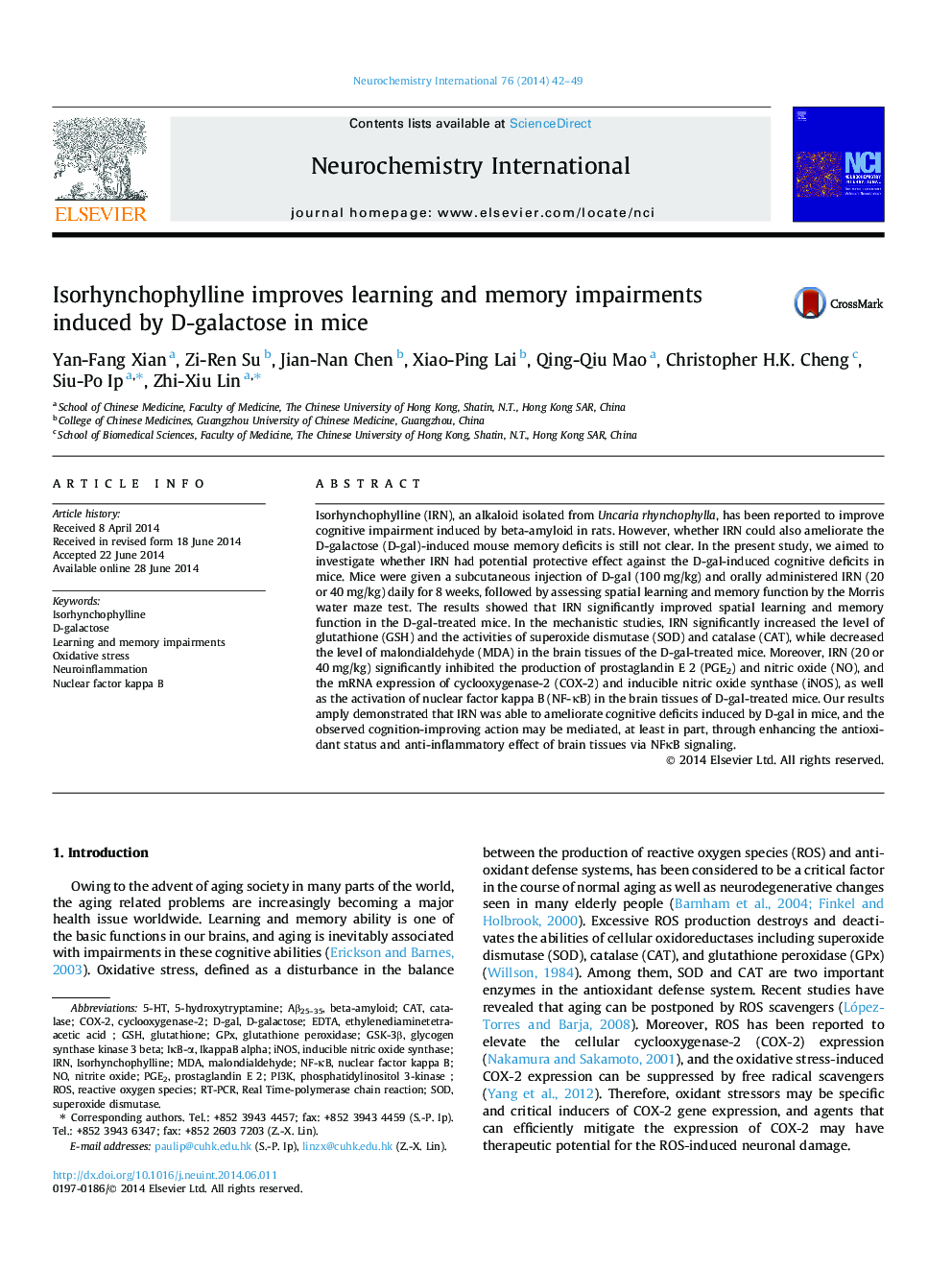| Article ID | Journal | Published Year | Pages | File Type |
|---|---|---|---|---|
| 2200533 | Neurochemistry International | 2014 | 8 Pages |
•IRN improves learning and memory impairments induced by D-gal in mice.•IRN reverses oxidative stress in the brain of the D-gal-treated mice.•IRN reduces neuroinflammation effect in the brain of the D-gal-treated mice.•IRN inhibits the activation of NFκB in the brain of the D-gal-treated mice.
Isorhynchophylline (IRN), an alkaloid isolated from Uncaria rhynchophylla, has been reported to improve cognitive impairment induced by beta-amyloid in rats. However, whether IRN could also ameliorate the D-galactose (D-gal)-induced mouse memory deficits is still not clear. In the present study, we aimed to investigate whether IRN had potential protective effect against the D-gal-induced cognitive deficits in mice. Mice were given a subcutaneous injection of D-gal (100 mg/kg) and orally administered IRN (20 or 40 mg/kg) daily for 8 weeks, followed by assessing spatial learning and memory function by the Morris water maze test. The results showed that IRN significantly improved spatial learning and memory function in the D-gal-treated mice. In the mechanistic studies, IRN significantly increased the level of glutathione (GSH) and the activities of superoxide dismutase (SOD) and catalase (CAT), while decreased the level of malondialdehyde (MDA) in the brain tissues of the D-gal-treated mice. Moreover, IRN (20 or 40 mg/kg) significantly inhibited the production of prostaglandin E 2 (PGE2) and nitric oxide (NO), and the mRNA expression of cyclooxygenase-2 (COX-2) and inducible nitric oxide synthase (iNOS), as well as the activation of nuclear factor kappa B (NF-κB) in the brain tissues of D-gal-treated mice. Our results amply demonstrated that IRN was able to ameliorate cognitive deficits induced by D-gal in mice, and the observed cognition-improving action may be mediated, at least in part, through enhancing the antioxidant status and anti-inflammatory effect of brain tissues via NFκB signaling.
Graphical abstractFigure optionsDownload full-size imageDownload as PowerPoint slide
